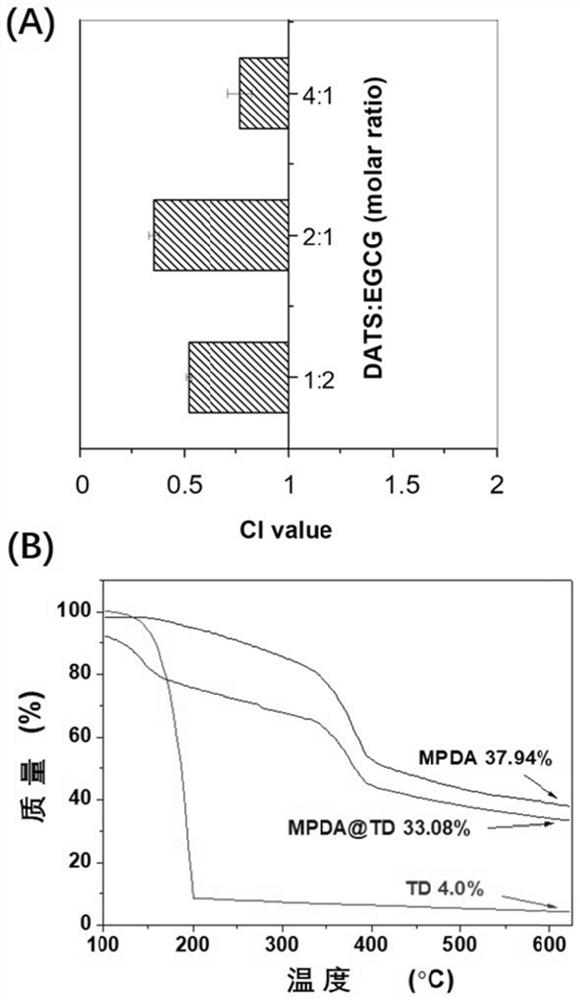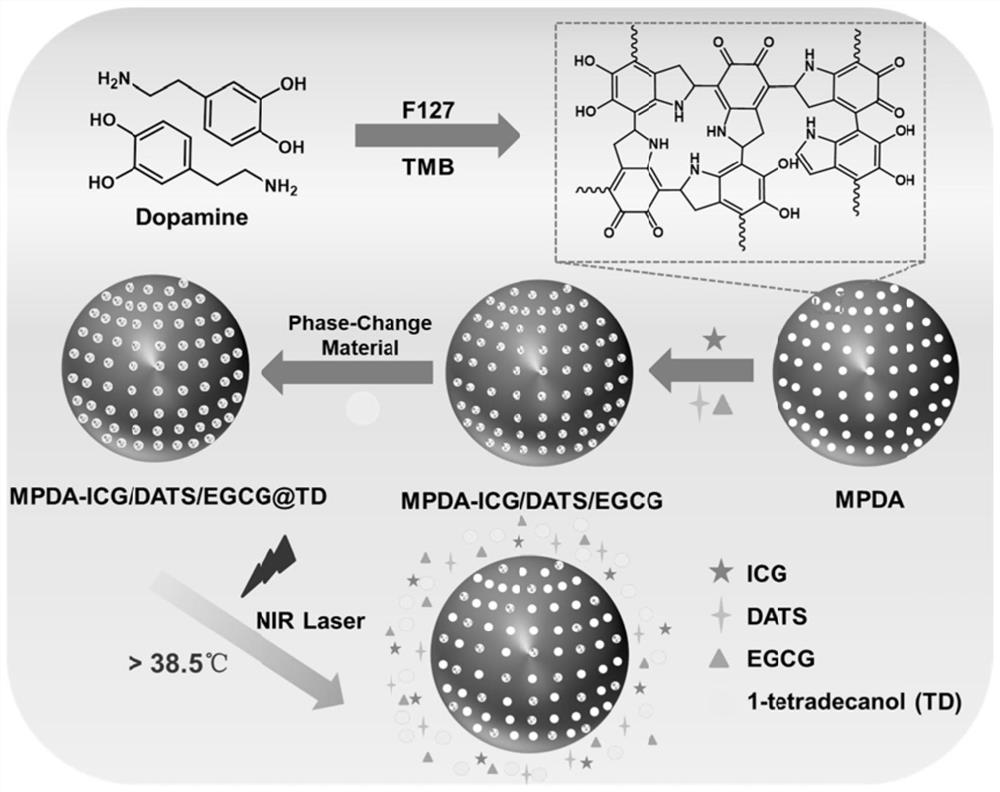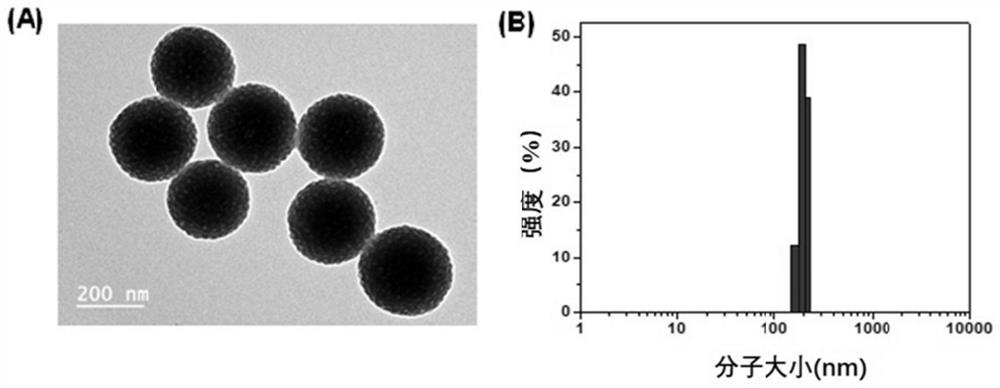Near-infrared light response nanoparticle and controlled release system
A near-infrared photoresponse and nanoparticle technology, applied in nanotechnology, nanotechnology, nanomedicine, etc., can solve the problems of uncontrolled release, weak anti-tumor effect, uncontrolled release, etc., to achieve controllable particle size, Good photothermal performance and simple preparation method
- Summary
- Abstract
- Description
- Claims
- Application Information
AI Technical Summary
Problems solved by technology
Method used
Image
Examples
Embodiment 1
[0060] Example 1 Preparation method of MPDA-ICG / DATS / EGCG@TD nanoparticles
[0061] Synthesis of Mesoporous Polydopamine Nanoparticles (MPDA NPs)
[0062] 0.15 g of dopamine hydrochloride and 0.1 g of poloxamer (F127) were added to a mixed solution (10 mL) containing deionized water and ethanol, and stirred to dissolve. Then, 160 μL of trimethylbenzene (TMB) was added, and ultrasonically dispersed in a water bath (30° C.) for 2 minutes. Subsequently, 375 μL of ammonia solution was added dropwise with stirring. After reacting for 2 hours, the obtained product was obtained by centrifugation at a speed of 11000 rpm / min, and washed four times with ethanol and water. Finally, the product was redispersed in 5 mL of deionized water.
[0063] Preparation of MPDA-ICG / DATS / EGCG@TD
[0064] Under sonication, 6 mg MPDA NP was dispersed in 3 mL methanol, then 3 mL containing 1 mg mL -1 Methanol solutions of ICG, DATS and EGCG. The reaction was mixed gently at 50 °C until the methanol...
Embodiment 2
[0065] The research of embodiment 2 DATS / EGCG optimum proportioning ratio
[0066] Digest and collect 4T1 cells in the logarithmic phase of growth, resuspend in RPMI1640 complete medium containing 10% FBS and 1% double antibody, seed in 96-well plate at a density of 5000 cells per well, and incubate at 37°C, 5%CO 2 Incubate overnight in a cell culture incubator. Subsequently, the medium was discarded and replaced with fresh complete medium containing different DATS / EGCG molar ratios (1:2, 2:1, 4:1, respectively). After 6h, use a power density of 1W cm -2 808nm laser irradiation for 5min. After continuing to cultivate for 48h), the medium in each well was sucked out, and the CCK-8 reagent diluted in advance was added (the volume ratio of CCK-8 reagent to medium was 1:10), and then cultured in the incubator for 2h , and then use a microplate reader to measure the absorbance of each well at a wavelength of 450 nm. Three sets of parallels were made for each sample. Calculate...
Embodiment 3
[0080] Example 3 Physicochemical properties of MPDA-ICG / DATS / EGCG@TD nanoparticles
[0081] Transmission Electron Microscopy (TEM) Imaging Experiments
[0082] The MPDA-ICG / DATS / EGCG@TD nanoparticles prepared in Example 1 were observed under a transmission electron microscope, and the imaging results are shown in the attached image 3 In (A), it can be seen from the figure that the appearance of MPDA nanoparticles is regular, with a compact mesoporous spherical structure and a single particle size distribution.
[0083] Particle size distribution of MPDA measured by dynamic light scattering (DLS)
[0084] The particle size distribution of MPDA is tested by DLS technology, and the statistical results are shown in the attached image 3 In (B), it can be seen from the results that the average hydrodynamic diameter of MPDA nanoparticles is about 198.6 nm, and the particle size distribution is highly uniform. Dynamic light scattering (DLS) measurements were consistent with TEM (...
PUM
 Login to View More
Login to View More Abstract
Description
Claims
Application Information
 Login to View More
Login to View More - R&D
- Intellectual Property
- Life Sciences
- Materials
- Tech Scout
- Unparalleled Data Quality
- Higher Quality Content
- 60% Fewer Hallucinations
Browse by: Latest US Patents, China's latest patents, Technical Efficacy Thesaurus, Application Domain, Technology Topic, Popular Technical Reports.
© 2025 PatSnap. All rights reserved.Legal|Privacy policy|Modern Slavery Act Transparency Statement|Sitemap|About US| Contact US: help@patsnap.com



